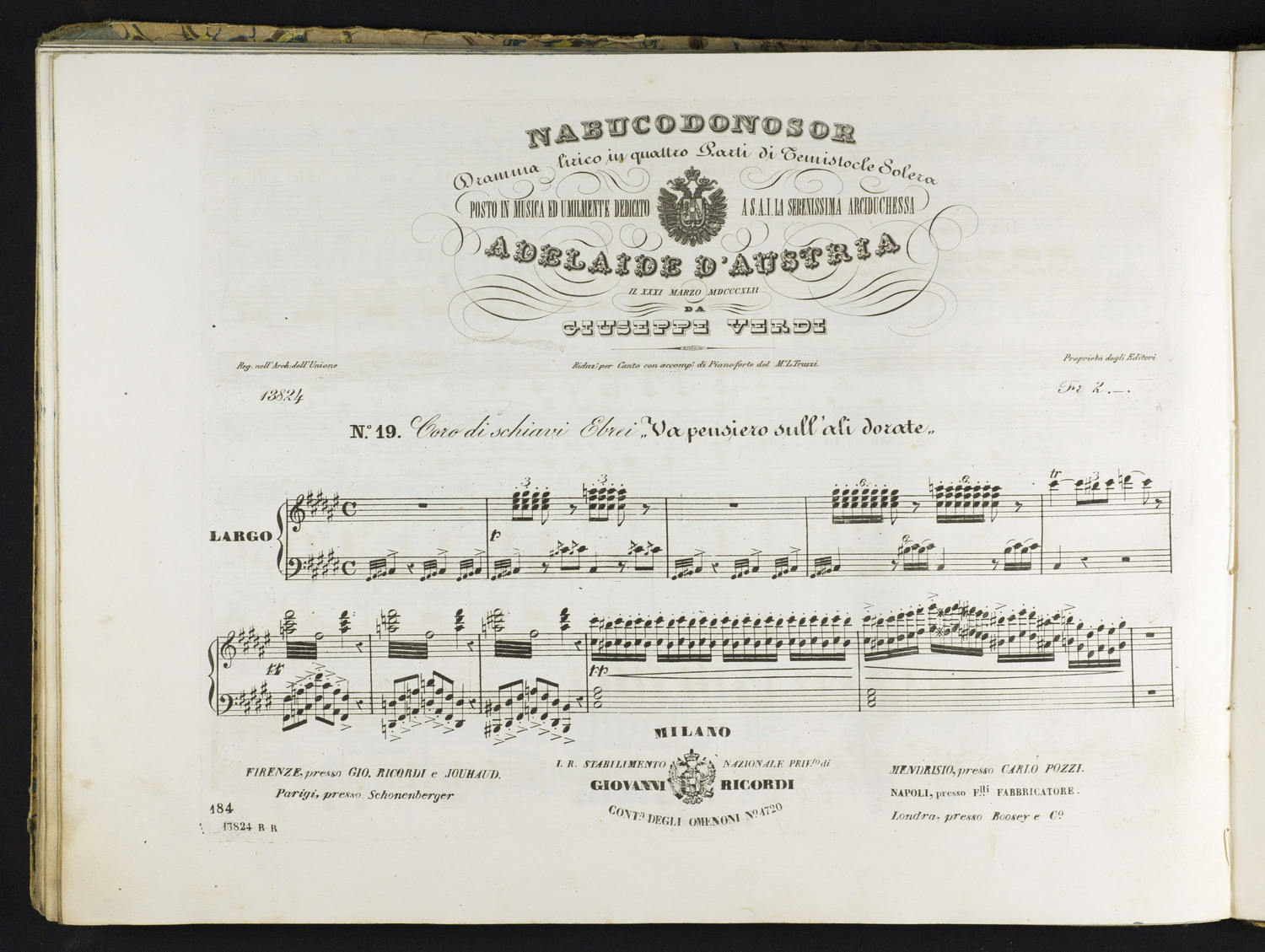Giuseppe Verdi—Nabucco

Giuseppe Verdi. Nabucco. Milano: Giovanni Ricordi, ca. 1843. pp. 184-185.

Lilly Library M1503.V484 N11 1843
Nabucco was first performed in 1842. It was one of Verdi’s first operatic successes. Using material from II Kings 24-25, II Chronicles 36, Daniel 1-5, and bits from Jeremiah and Psalms, the libretto (written by Temistocle Solera) relates the Babylonian invasion of Judah and subsequent captivity of the Jewish people in a foreign land. The work’s title is derived from one of the key characters, the Babylonian King Nebuchadnezzar II. As related by the third movement of Bernstein’s first symphony, this captivity is attributed to the people not heeding Jeremiah’s earlier warnings.
The music displayed is a portion of the most famous chorus from Nabucco, “Va Pensiero.” Here, in true operatic fashion, the Israelites show their distress at being uprooted by singing, “May my song fly to greet thee, my homeland.” Not only did this tune propel Verdi to fame, but it also became identified with Italy as it was forming a national identity. It reached a status almost on par with Italy’s national anthem and continues to be used as a vehicle to strike patriotic fervor into the hearts of Italians. The piano/vocal score on display is an early edition of Nabucco, published around 1843, and comes from the Lilly Library’s collection.
